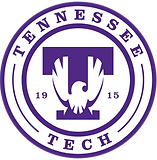Tennessee Technological University
GPA: 3.2
Bachelor of Science in Business Administration
Here, you'll find the curriculum vitae specific to my academic journey at Tennessee Technological University. Delve into the details of my degrees, 125 credit hours of coursework, and academic achievements during my time at this esteemed institution.
Management Information Systems Analysis and Design
An applications-oriented study of the business systems development life cycle and current systems analysis and design methods are emphasized.
Information Systems Development Practicum
Students develop their knowledge and skills in planning, analyzing, designing, and implementing real-world information systems.
Business Database Management I
Concepts of designing and managing databases in a business environment with emphasis on database design, and normalization.
Business Database Management II
Developing database systems using Structured Query Language (SQL). Utilized SQL Server Management Studio and MySQL. Performed sub-queries, created stored procedures, and more.
Business Applications Development I
Introduction to development of business applications using system development tools.
Business Applications Development II
Advanced use of system development tools with an emphasis on cloud services.
Business Data Communications
Concepts of data and voice communication networks for supporting business activities to include the OSI model, local and wide area networks, network security, and network management.
Management Information Systems
Management information needs and the technical, economic, and organizational impacts of these needs.
Business Strategy
A capstone course stressing management problem analysis, problem solving, and decision-making.
Operations Management, Logistics, and SCM
This course is an introductory survey of the basic concepts and principles of the management of operations, supply chain and logistics. It covers the management of the processes, resources, and technologies in the production, transportation and distribution of goods and services.
Managerial Finance
Financial theory and procedures required for the financial decision-making function of business organizations.
Principles of Accounting I
Fundamental principles and procedures of financial accounting, including transactions analysis, financial statements, internal control, and an introduction to data analysis using data visualization to understand financial information.
Principles of Accounting II
Fundamental principles and procedures of financial accounting, including capital structure and the statement of cash flows, and managerial accounting, including cost structure, budgeting, strategic decision-making, and time-value of money.
Cost Accounting
Procedures for providing accounts and reports of cost information to management for planning, controlling, pricing and external reporting. Cost, volume, and profit analysis and budgeting techniques with the use of technology.
Macroeconomics
Aggregate supply and aggregate demand, employment and income determination, money and banking, monetary and fiscal policy, and international finance.
Microeconomics
Supply and demand, theory of demand, principles of production, pricing, and distribution. Output market structures, labor markets and issues, and international trade.
Computer Applications/Business
Management approach to business applications of computer technology. Microcomputers and large scale computers are used in problem solving.
Human Resources Management
Personnel management policies, practices, and laws.
Management and Organizational Behavior
Management functions and processes as applied to organizations with special emphasis on the behavioral aspects.
Conflict Management and Negotiation
Development of interpersonal skills for managing conflict and negotiations in business.
Business Law
The legal aspects of the business environment including antitrust, administrative, consumer, and employment law; business organizations; and principles of contracts.
Business Communications I
Principles and practices in developing appropriate business messages that report primary and secondary research in a variety of styles.
Professional Communication
Overview of skills and principles related to oral communication in various professions.
Business Analytics, Data-Driven Decision Making
Business Analytics is the use of data and quantitative methods to help managers gain insight about business operations. This course emphasized descriptive, predictive, and prescriptive analytics.
Business Statistics
Business applications of statistics and probability, with emphasis on critical thinking, statistical inference, statistical dependence, and linear regression.
Business Intelligence
Business Intelligence (BI) is the process of collecting data from a variety of sources and providing it to decision-makers in a form that enhances business value. This course will provide an understanding of data organization, BI processes and techniques, and how to transform data to support business decision-making.
Principles of Marketing
Marketing in an economic system, including marketing strategy and marketing mix variables available to the marketing manager.
Maintenance, Replacement, and Reliability Engineering
Reliability networks, failure mode and effect analysis, apportionment, availability, maintainability, fault trees and human reliability.
Lean Six Sigma
Review of current engineering and technology techniques relevant to manufacturing, service, quality and productivity.
Quality/Productivity Systems
Contemporary issues in quality and productivity management are examined.
Computer Forensics and Investigations
Investigation, discovery, and analysis of digital computer evidence. Student work groups use computer hardware and forensic software to perform computer forensic investigations and solve sample cases.
Calculus I
A survey of limits, continuity, and the differential and integral calculus with applications in business, economics and the life sciences.
College Algebra
Review of algebra and coordinate geometry; functions; polynomial, rational, exponential, and logarithmic functions; systems of equations; binomial formula; counting (multiplication principle, permutations, and combinations); and conics.
United States History
Industrialism and Urbanism; World Power; Reform; World War I and aftermath; New Deal; World War II; Prosperity; and the Cold War.
American Literature
Representative authors, periods, or themes from the colonial period to the present.
English Composition I
Introduces students to expressive, expository and persuasive writing.
English Composition II
Builds on writing and research processes taught in ENGL 1010; emphasizes critical reading, critical thinking, and critical writing (persuasion) about a variety of written texts and other media.
Biology I
Introduction to concepts of biology and their relationships to current and future social problems.
Biology II
Survey of plant and animal diversity, introductory ecology, and man's impact on the environment.
Military Science
Transfer Credit from Military Education.





